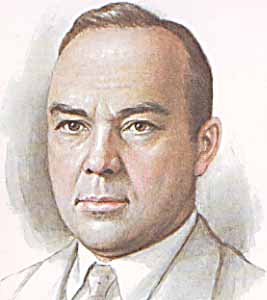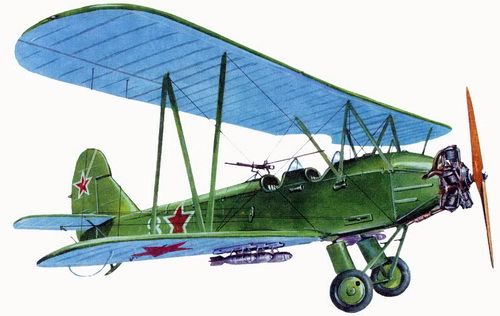Aircraft designer
Nikolai Nikolaevich Polikarpov

July 8, 1892 - July 30, 1944
Polikarpov was born in the village of Giorgievsk in
Oryol Oblast. He was the son of a village priest in the Russian
Orthodox Church. He initially also trained for the priesthood and
studied at the Oryol Seminary before moving to Saint Petersburg
Polytechnical University in 1911, where he became fascinated with
the fledgling aviation work being carried out under the shipbuilding
department, Polikarpov graduated in 1916 and went to work for Igor
Sikorski, the head of production at the Russian Baltic Carriage
Factory. While working for Sikorski, Polikarpov helped design the
massive Ilya Muromets four-engine bomber for the Imperial Russian
Air Force.
Polikarpov stayed in Russia after the Russian Revolution
and rose to become head of the technical department Dux Aircraft
factory in 1923. Polikarpov was responsible for some of the first
indigenous aircraft designs in the Soviet Union during the 1920s
including the I-1 fighter (1923), R-1 reconnaissance plane (1927),
U-2 utility biplane (1927–1928), I-3 fighter (1928), R-5 reconnaissance
bomber (1928). Notably, U-2 Kukuruznik still remains the second
most produced aircraft of the world, better known under modern designation
Po-2.
In 1928, under provisions of the Five Year Plan for
experimental aircraft design, Polikarpov was assigned to develop
the primarily wooden I-6 fighter for delivery by mid-1930. The plan
was unrealistic and failed. As such, in October 1929, Polikarpov
and around other 450 aircraft designers and engineers were arrested
on trumped up charges of sabotage and counter-revolutionary activities.
Polikarpov was sentenced to death. In December, after two months
of waiting for execution he was transferred to a Special Design
Bureau of OGPU set at Butyrka prison and had the sentence changed
to 10 years of forced labor. Polikarpov and the others were moved
to Central Design Bureau 39 (TsKB-39) to complete the I-5 project.
After a successful demonstration of the new design, the sentence
was changed to a conditional one, and in July 1931 he was granted
amnesty together with a group of other convicts. It was not until
de-Stalinization of 1956, when these charges were formally dropped
– 12 years after Polikarpov's death.
After the release Polikarpov initially worked with
Pavel Sukhoi since 1931, developing the I-16 in 1933 and I-15 in
1934. Then he worked under Ilyushin in 1937. In 1938, he established
an independent design bureau. In 1939, he completed work on the
I-153. In 1939, he was ordered to make a trip to Germany. In his
absence, his plant director and chief engineer, along with design
engineer Mikhail Gurevich put forth a proposal for a new fighter,
the I-200, and received approval to create a new Design Bureau under
the leadership of Artem Mikoyan, whose brother Anastas Mikoyan was
a senior politician under Joseph Stalin. On his return, Polikarpov
found that his Bureau no longer existed, with his engineers at the
new MiG bureau and his plant given over to the Sukhoi bureau.
Polikarpov was subsequently appointed professor at
the Moscow Aviation Institute in 1943. He died on July 30, 1944
from stomach cancer. He is buried in Novodevichy Cemetery in Moscow.
Polikarpov was a recipient of numerous awards, including
the State Stalin Prize (1941, 1943) and Hero of Socialist Labor
(1940). Polikarpov Peak in the Pamir Mountains was named after him.
